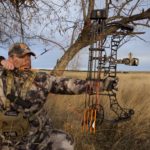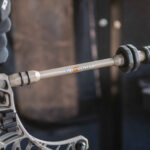There are many types of arrows to choose from when trying to decide which are the best hunting arrows for you.
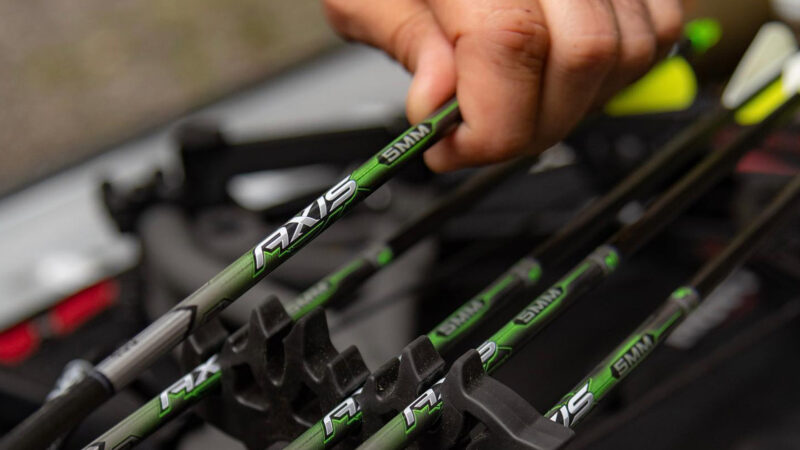
These include: carbon, carbon/aluminum, aluminum or wood. Each has a purpose and application so before making a choice consider what the arrow will be used for.
Carbon Arrows
Without a doubt this is the most popular hunting arrow on the market and what many feel are the best hunting arrows on the market. Carbon arrows are tough and come in a variety of sizes and weights.
Unlike aluminum arrows that can be permanently bent carbon arrows are either straight or broken.
There are three main types of carbon arrows currently on the market.
These include pultruded carbon shafts (with unidirectional carbon fibers and exterior fitting nocks and points), internal component shafts (with the carbon fibers in a cross-weave and nock and points fitted inside the shaft), and lastly, carbon/aluminum composite arrows.
The most popular shaft amongst bowhunters is the internal component shafts (for obvious reasons).
These shafts are user-friendly and do not require any special care in order to use. For the most part, pultruded carbon shafts are less popular and rarely, if ever, used by bowhunters.
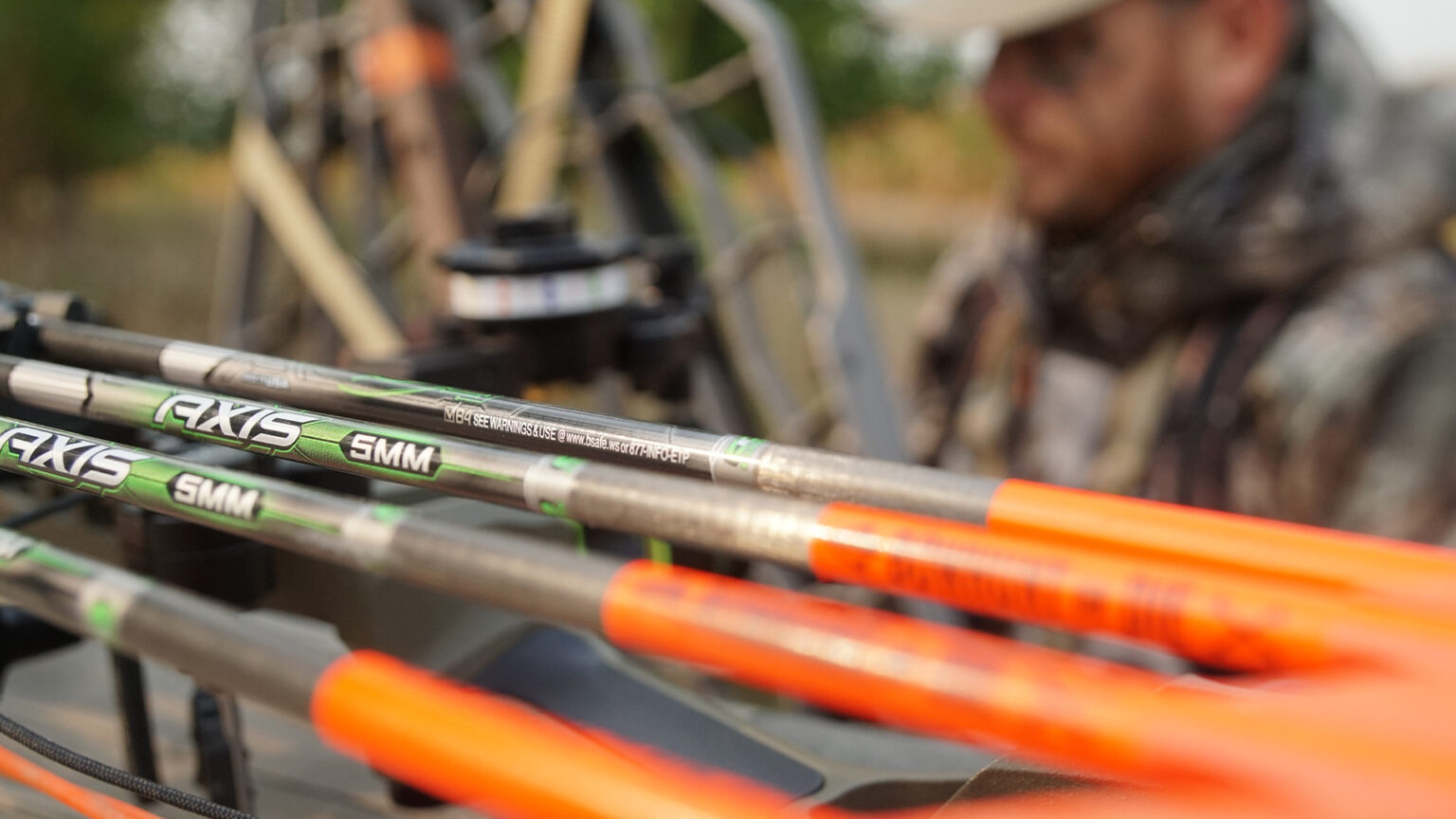
The benefits of using an all-carbon arrow are increased strength, reduced arrow weight, less wind drift, and increased target penetration due to smaller shaft diameter when compared to aluminum arrow shafts.
While the smaller shaft diameter was once a problem for archers who preferred to fletch their own arrows, todays manufacturers make vanes specifically for small-diameter shafts so this this no longer an issue.
Arrow weight reduction is made possible by using stronger yet lighter materials to make the carbon arrow.
Unlike aluminum, stronger doesn’t mean heavier when talking about carbon arrows because the material is inherently lightweight to begin with.
Carbon arrows also shoot better in windy conditions due to less surface area when compared to aluminum or other large-diameter arrow shafts.
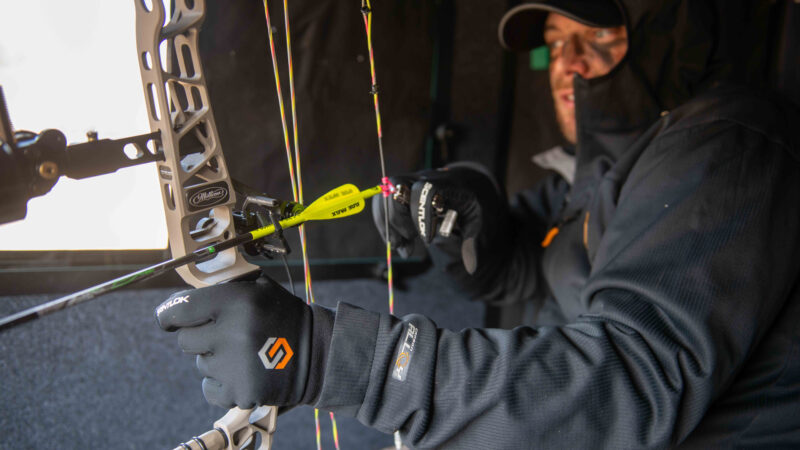
The smaller shaft diameter of carbon arrows also leads to increased penetration on targets and game animals because there is less friction of the arrows against muscle, hide and hair.
The second most popular carbon arrow option is the carbon/aluminum composite shafts.
These arrows shafts come in two different variations; an aluminum core wrapped in an all-carbon outside, or a carbon core wrapped in an aluminum jacket.
The primary benefit of these arrows is increased weight which translates into higher downrange kinetic energy for increased penetration and bone-crushing power.
However, with the added weight comes slower arrow speed. Easton Archery makes both types of arrows. The Full Metal Jacket is a carbon-core arrow wrapped in an aluminum jacket.
The Carbon INJEXION has an aluminum core with a carbon jacket and is ultra-thin in diameter.
The benefits of using an all-carbon arrow are increased strength, reduced arrow weight, less wind drift, and increased target penetration due to smaller shaft diameter when compared to aluminum arrow shafts.
While the smaller shaft diameter was once a problem for archers who preferred to fletch their own arrows, todays manufacturers make vanes specifically for small-diameter shafts so this this no longer an issue.
Arrow weight reduction is made possible by using stronger yet lighter materials to make the carbon arrow. Unlike aluminum, stronger doesn’t mean heavier when talking about carbon arrows because the material is inherently lightweight to begin with.
Carbon arrows also shoot better in windy conditions due to less surface area when compared to aluminum or other large-diameter arrow shafts.
The smaller shaft diameter of carbon arrows also leads to increased penetration on targets and game animals because there is less friction of the arrows against muscle, hide and hair.
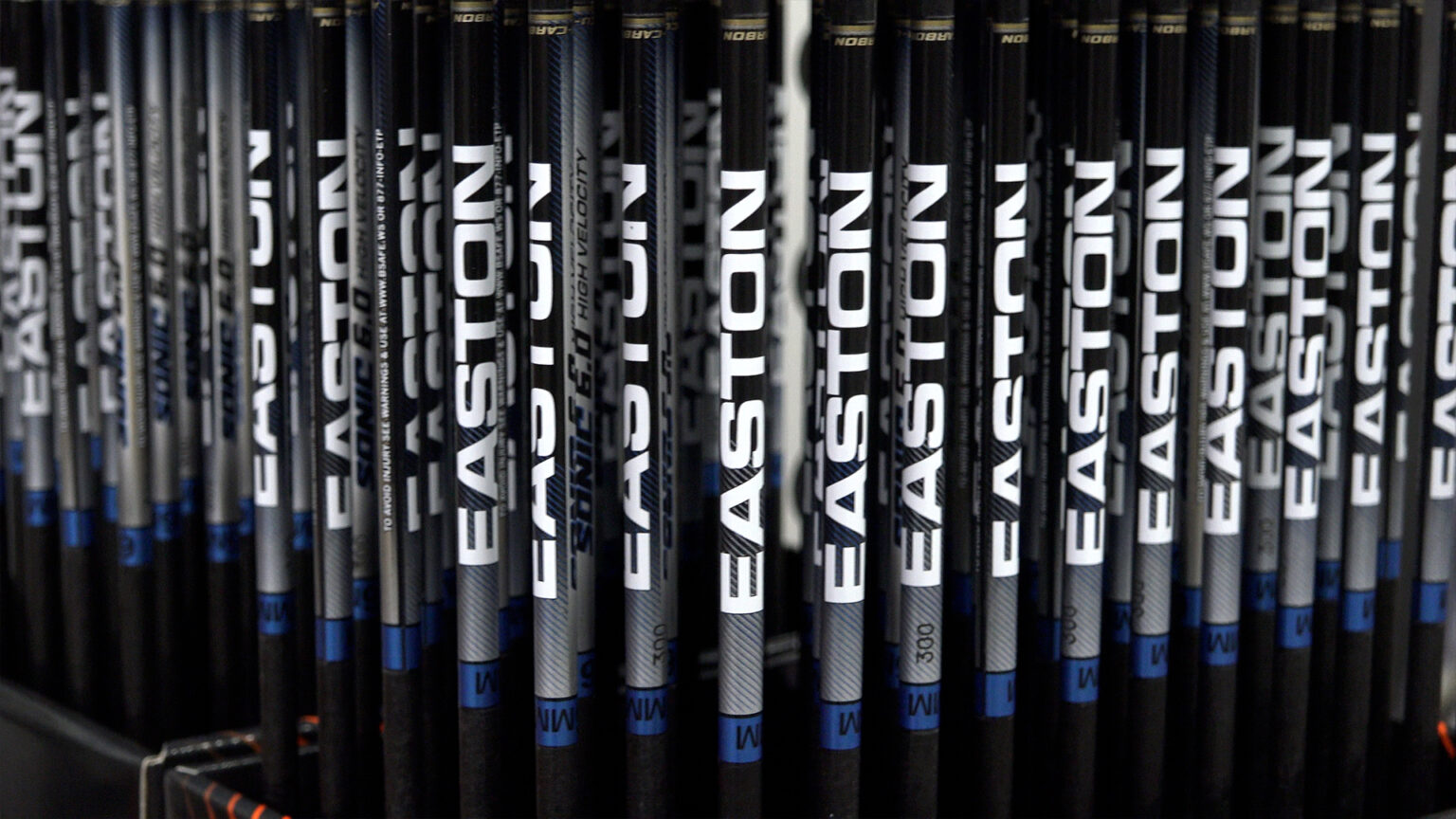
The second most popular carbon arrow option is the carbon/aluminum composite shafts.
These arrows shafts come in two different variations; an aluminum core wrapped in an all-carbon outside, or a carbon core wrapped in an aluminum jacket.
The primary benefit of these arrows is increased weight which translates into higher downrange kinetic energy for increased penetration and bone-crushing power. However, with the added weight comes slower arrow speed. Easton Archery makes both types of arrows.
The Full Metal Jacket is a carbon-core arrow wrapped in an aluminum jacket. The Carbon INJEXION has an aluminum core with a carbon jacket and is ultra-thin in diameter.
Special care must be given when shooting carbon arrows because they can splinter from arrow-to-arrow impact. These splinters may not be noticeable and can threaten the overall integrity of the arrow.
In some cases, the arrow can explode upon being shot from the bow. This is obviously a dangerous situation. Thus, constant inspection of carbon arrows (before shooting) is a must.
As mentioned, carbon arrows come in a variety of weights; ultra-lightweight (7 grains per inch and lower for maximum arrow speed), mid-weight (8-9 grains per inch for a blend of speed and kinetic energy), and heavy-weight (10 gpi and above for the hardest hitting arrow possible).
Arrow selection should be based mainly on the game animal you are hunting. Lightweight arrows are good for small-framed animals such as antelope, Javelina, and turkey.
Mid-weight arrows are ideal for whitetail, black bear and mule deer. Heavy-weight arrows are normally reserved for big-game such as elk and grizzly bear.
Aluminum Arrows
While aluminum arrows were once the standard arrow shaft for bowhunters, the popularity of carbon has almost entirely consumed the market.
Although aluminum arrows have benefits, they aren’t without their drawbacks. For starters, aluminum can be bent. Therefore, many shooters will experience bent arrow shafts.
Once that occurs, the arrow should be used for nothing other than target practice (depending on the severity of the bend). If the bend is too extreme, the shaft must be discarded and replaced.
Carbon arrows, on the other hand, are either broken or straight.
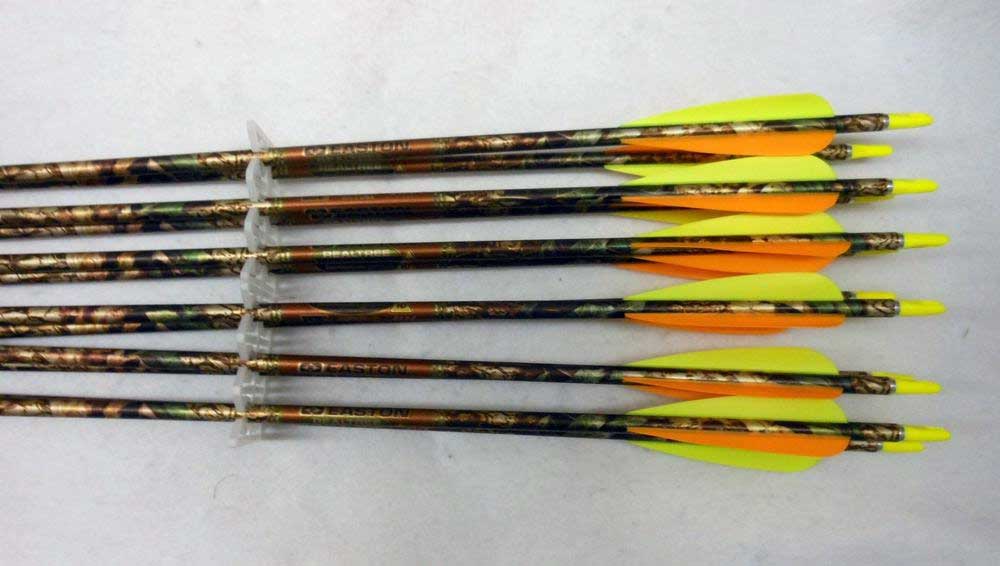
Some benefits to using aluminum arrows are cost and tighter tolerances. Aluminum arrows are typically cheaper than most carbon shafts and due to the way they are manufactured the straightness tolerances on aluminum arrows tend to be slightly better than carbon shafts.
Although that gap continues to narrow as carbon manufacturing processes continue to improve.
Aluminum arrows are typically heavier which means they hit harder and shoot quieter than light weight carbon shafts.
Wood Arrows
For most applications, wood arrows are reserved for bowhunters using traditional equipment. All wood arrows are typically made from quality Port Oxford White Cedar.
This wood yields excellent performance characteristics and allows shooters to enjoy maximum accuracy. Port Oxford Cedar has its origin in the Orient however today there is only one area that offers a good supply of this natural arrow material.
The Coquille Valley of Southwest Oregon is currently the world’s producer of the cedar.
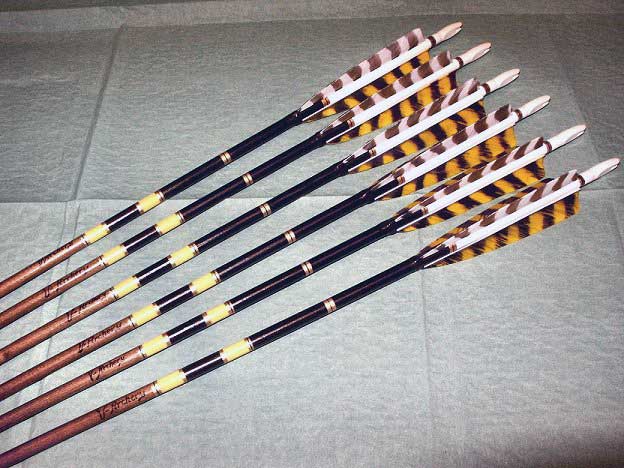
The spine weight or “stiffness” of an arrow is the most important characteristic. However, wood arrows are spined both automatically and manually.
The average dozen wood arrows with the same spine weight will not vary more than plus or minus five pounds; which can be hard for a bowhunter to notice.
And, unlike aluminum, fiberglass or carbon shafts, the spine weight of wood arrows is a “natural” thing and cannot be “manufactured”; in essence, the spine weight determined solely by the diameter of the shaft and the density of the wood. The best wood arrows have small diameters and high spine weights.
The cost of wood arrows varies depending on several factors including material and whether or not the arrows will come with vanes attached and/or cresting accented on the shaft.
Expect to pay anywhere from the bottom range of aluminum, to the higher range of carbon. The cost difference comes with the differences in shaft material and quality. Wood arrows are a great choice for those shooting long bows or recurve bows.
So what are the best hunting arrows?
By all accounts carbon arrow shafts take that award in today’s market. Due to improvements in manufacturing their straightness is as good, if not better, than aluminum shafts while their durability is greatly superior to aluminum.
Because they are available in a variety of weights and stiffness there are carbon arrows to fit every hunter and every hunting situation.
Most modern whitetail bowhunters consider a finished carbon arrow in the 400 grain weight range to be the gold standard for hunting situations. This weight includes the arrow, insert, point (broadhead), nock, fletching and other accessories such as arrow wraps and lighted nocks.

 By
By 
